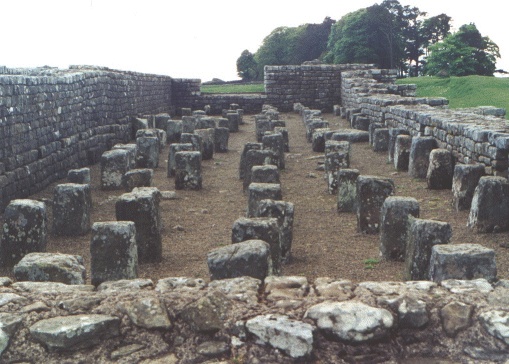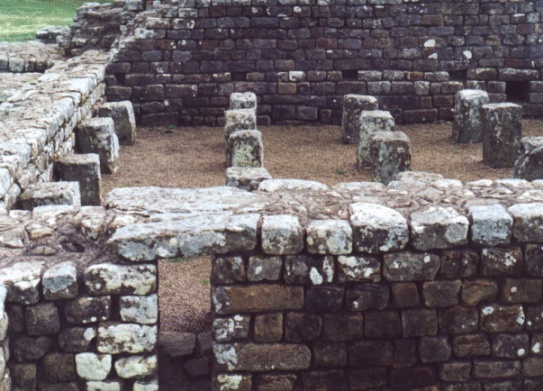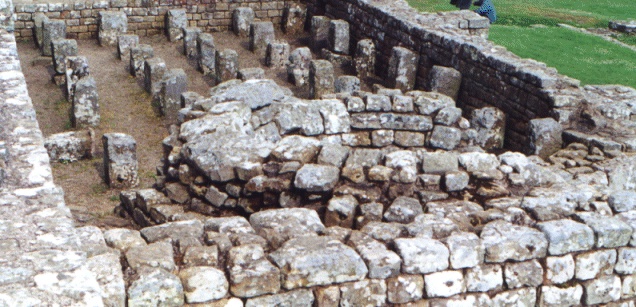
 |
This photo shows the northern half of granary looking west. The stone pillars were there to raise the floor in order to keep food dry and vermin free. A common mistake made by many visitors to Vercovicium is that this building was heated, and that the pillars are part of a hypocaust system. This, if true, would have made the building very unsuitable for use as a food store. |
| Here's a better view of the ventilation system for the granary. Directly in front of us is a vent in the outer wall, and behind that are, again, the pillars that supported the floor. This system ensured a circulation of air which would have helped keep the granary cool and dry. |
 |

|
The granary at Housesteads was originally a single building, the roof of which was supported by the central row of six piers which we can see before us. In the 3rd century the bulding was divided into two, and the walls that sit either side of the columns were built. These walls incorporate the piers so it has been presumed that whilst the walls were being built they were still standing.
|
| In the fourth century, the southern half of the granary was converted to domestic use, and was supported by sleeper walls. The two main theories for this conversion are that either a reduction in the size of the garrison took place, or that building XV became a second storage area, with distinction made between the supplies for the fort, and those earmarked for wider distribution. Evidence for 18th century occupation is found here, as the circular structure shown in the picture below is a corn-drying kiln that was built into the remains of the granaries during that period. |
 |